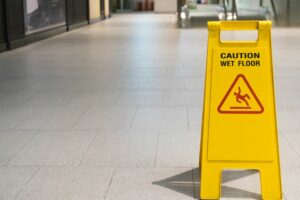
For a free legal consultation, call 631-451-7900
Common Injuries from Falls
According to the Centers for Disease Control and Prevention (CDC), over 800,000 patients are hospitalized each year due to injuries from falls. Your slip or trip and fall can become a legal issue if you sustained the injury on someone’s property if they breached their duty of care by failing to maintain safe premises. A slip and fall can result in the following types of injuries:- Broken bones: The symptoms of a fractured or broken bone can include discoloration around the affected area, bleeding, swelling, dizziness, and feeling nauseated. Depending on the location, a broken bone can impede your daily activities for several weeks while it heals.
- Sprained ankles and wrists or torn ligaments. The signs and symptoms of sprained ankles or torn ligaments vary depending on the severity of the injury. In most cases, you are likely to experience a restricted range of motion, bruising, swelling, and tenderness in the affected area. A popping sound or sensation may occur at the time of injury. These injuries can lead to complications such as chronic pain, chronic ankle or wrist joint instability, and arthritis in the ankles or wrists.
- Traumatic Brain Injury (TBI). Per the National Institute of Neurological Disorders and Stroke (NINDS), about half of severely injured TBI patients will require surgery to remove the bruised brain tissue or ruptured blood vessels. There is also a risk of disabilities, depending on factors such as the age of the patient, location of the injury, and the severity of the injury. Such disabilities can affect cognitive processes, communication, behavior, and mental health. TBI symptoms include loss of consciousness, nausea or vomiting, headaches, drowsiness or fatigue, difficulty sleeping, disorientation, and loss of coordination and balance.
- Spinal cord injury. The impact of the fall can cause spinal and other nerve damage. Depending on the severity of the injury, victims may require assistive devices and physical therapy to return to normal life. The injury typically results in permanent loss of strength, functionality, and loss of sensation below the area of the injury. If you suffer a spinal cord injury, you may experience symptoms that include muscle spasms, muscle weakness, leakage of urine or urine retention, shortness of breath, loss of coordination, and stiff muscles.
- Knee damage. Knee injuries can be caused by applying a bending force to the knee or a direct impact from a fall. The typical symptoms are swelling, pain, and tenderness in the affected area. Other symptoms of knee injuries include difficulty in bending the knee, inability to bear weight on the knee, clicking or popping sounds, feelings of instability, and redness. Severe knee injuries may require injections of cortisone, surgery to repair the ligaments or extensive meniscal tears, and knee immobilization to prevent further injury and pain.
Hazards That Cause Slip or Trip and Fall Injuries
The injuries you can get from a fall may result from dangerous conditions, such as wet or uneven surfaces. If the following situations are present, walking can be hazardous:- Loose mats and carpeting.
- Cluttered floors.
- Loose floorboards.
- Defective sidewalks.
- Wet or icy floors.
- Recently waxed floors.
- Potholes or tree roots in parking lots.
- Spilled liquids or oils.
- Uneven staircases.